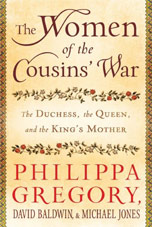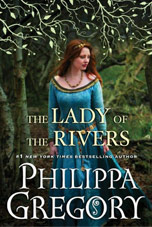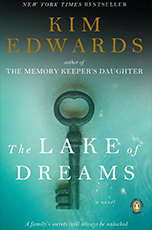Philippa Gregory Paints History in Fact and Fiction
 Last Fall, fans of British history and historical fiction were twice blessed with new books from bestselling historical novelist Philippa Gregory. Esteemed historians David Baldwin and Michael Jones joined the author in writing The Women of the Cousins’ War (Touchstone, 352pgs), a book of factual essays on three influential female figures during the events of England’s Wars of the Roses (1455–1485). Baldwin writes of Elizabeth Woodville, wife of Edward IV, who was noted as being the first commoner in England to marry a king for love. Jones, outlines the life of Margaret Beaufort, mother of Henry VII, and one of the lesser known women of the Tudor dynasty. Gregory presents the early life of Jacquetta, duchess of Bedford, who at one time stood trial for witchcraft. Along with this non-fiction account, Gregory also published The Lady of the Rivers (Touchstone, 464pgs), a fictional telling of Jacquetta’s life.
Last Fall, fans of British history and historical fiction were twice blessed with new books from bestselling historical novelist Philippa Gregory. Esteemed historians David Baldwin and Michael Jones joined the author in writing The Women of the Cousins’ War (Touchstone, 352pgs), a book of factual essays on three influential female figures during the events of England’s Wars of the Roses (1455–1485). Baldwin writes of Elizabeth Woodville, wife of Edward IV, who was noted as being the first commoner in England to marry a king for love. Jones, outlines the life of Margaret Beaufort, mother of Henry VII, and one of the lesser known women of the Tudor dynasty. Gregory presents the early life of Jacquetta, duchess of Bedford, who at one time stood trial for witchcraft. Along with this non-fiction account, Gregory also published The Lady of the Rivers (Touchstone, 464pgs), a fictional telling of Jacquetta’s life.
In a recent e-mail exchange with Nick Owchar of the Los Angeles Times, the novelist spoke of her experience writing both books. When asked whether it was her intent to show readers how writing non-fiction differs from writing fiction, she replied: “I didn’t have anything like a grand idea of demonstrating how the two are different, though as I was writing them alongside each other, I found I was thinking about the differences all the time as I was experiencing them.
 “My intention was to provide the readers of the fictions with three factual essays to serve as “companions” to the novels. So many people ask me where the history ends and the fiction begins that I now provide a bibliography of history books at the end of every novel so people can discover for themselves. In the case of Jacquetta, there is nothing in general publication at all. My research on Jacquetta produced files and files of notes, so I thought that I might as well write an essay on her for readers to study, if they so wished.”
“My intention was to provide the readers of the fictions with three factual essays to serve as “companions” to the novels. So many people ask me where the history ends and the fiction begins that I now provide a bibliography of history books at the end of every novel so people can discover for themselves. In the case of Jacquetta, there is nothing in general publication at all. My research on Jacquetta produced files and files of notes, so I thought that I might as well write an essay on her for readers to study, if they so wished.”
On what Gregory learned by taking two different writing approaches to the same life, she explained: “What became really clear to me was how much the history (just like a novel) is a process of selection of facts based on the interest and prejudices of the historian. We all know that history is subjective, but it was a very powerful experience for me to see how the material that struck me as important for understanding the historical character was exactly the material that struck me as interesting as a novelist. What is revealed in both the novel and the history is the life of Jacquetta and, of course, the interests of the author.
“The other thing that really struck me — and this is rather technical — is the difference in language. Often the scenes in the history and the fiction are almost identical but the descriptions are totally different. The fictional scene uses far more active and interesting verbs, and is designed to evoke emotion in the reader. It is also written with an eye to lyricism of language, and even how the paragraphs look on the page. Ideally, the novel is a thing of beauty. The history is more restrained and dry. I suspect that as readers we confuse coolness with accuracy and that we all think that detachment is ‘scientific.’”

